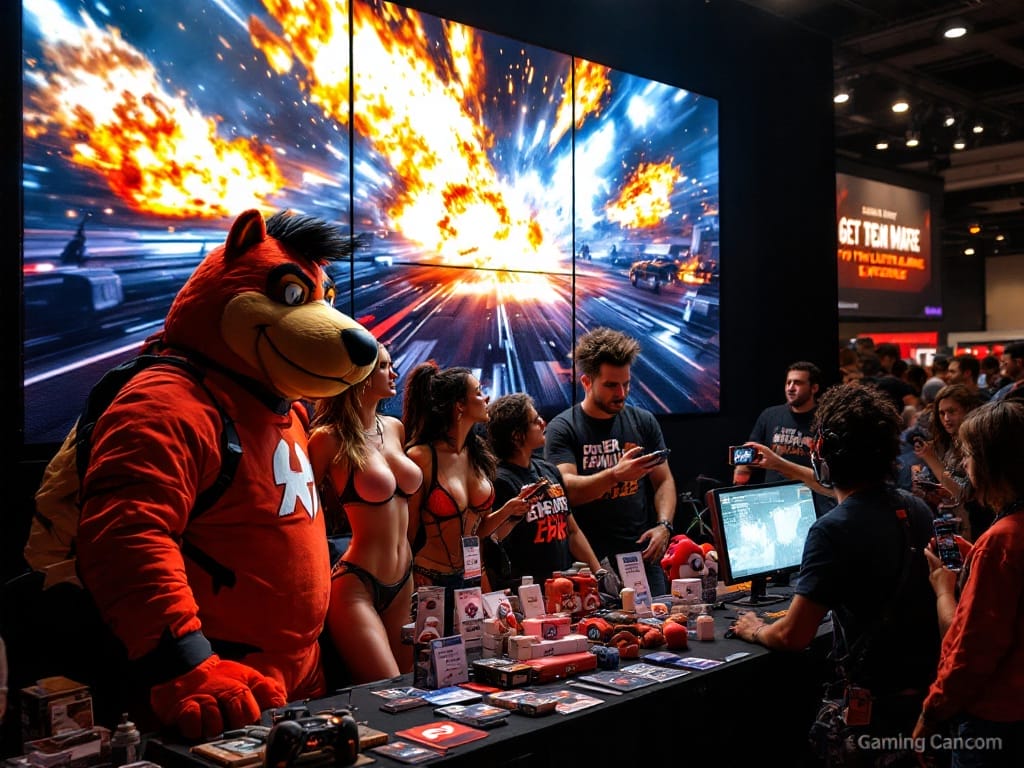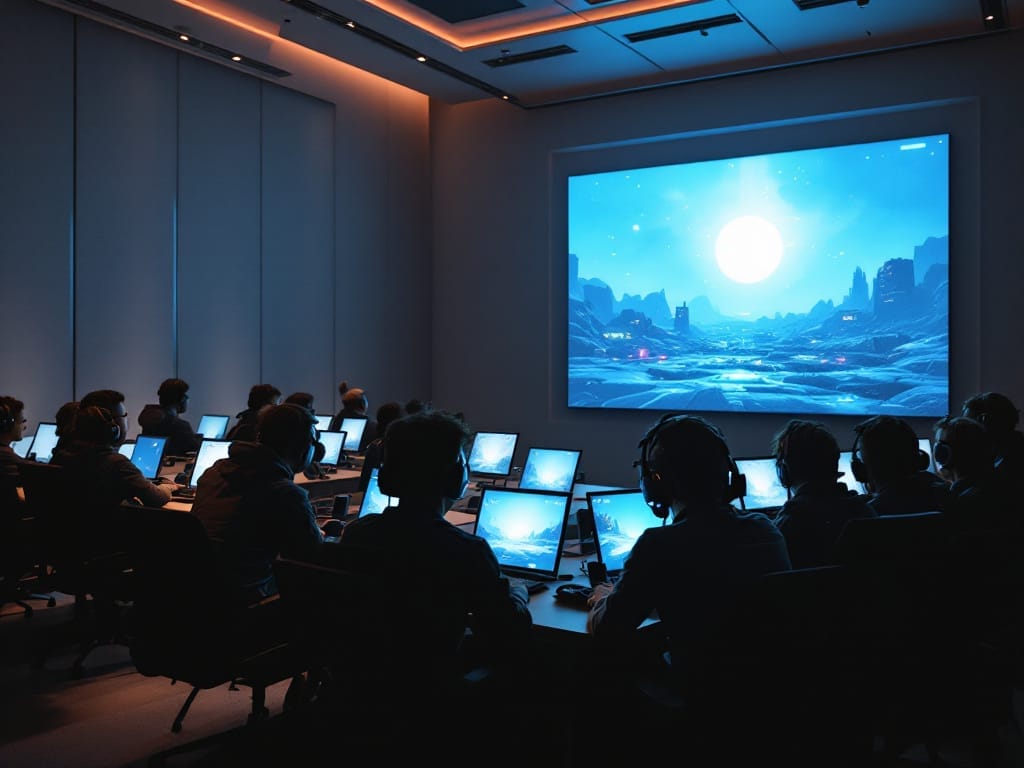Game developers can make a lot of money if they are careful and try to be consistent with their game development, in this article we are saying to game developers: don’t make these top 4 mistakes, if you want to be successful
Making a video game is an art form, but it’s also a business, and no one ever said that game development was easy, and while there are a lot of ways to make money in the industry, there are also a lot of ways to lose money.
The top game developers earn millions of dollars every year. However, there are a few mistakes that these developers make that can cost them a lot of money. Like in any other business, there are risks and rewards. The biggest risk for a video game developer is making a game that no one wants to play. But there are other mistakes that can be just as costly.
In this article, we’re going to take a look at the top three mistakes that game developers can make, and how to avoid them. We will not cover game design mistakes as we think they have different origins and solutions. We will not also look into game engine problems, like Unity Mistakes, or Unreal complexity, and only focus on mistakes game developers as a whole can do.
Game developers, don’t make these top 4 mistakes list
Below are the top 4 mistakes done by indiegamedevs:
Mistake #1:Trying to do too much themselves.

The allure of the solo developer or the small, scrappy indie team tackling every aspect of a game is strong. It speaks to passion, vision, and sometimes, necessity due to tight budgets. However, the text highlights a critical point: this approach frequently leads to frustration and wasted effort. Why does this happen, and what are the deeper consequences?
- The Allure vs. Reality: Many developers, especially early on, possess a powerful creative vision. They want control over every pixel, sound wave, and line of code to ensure it matches their intent. This “auteur” approach can be admirable, but it often clashes with the sheer breadth of skills required for modern game development. Creating a game involves programming, 2D/3D art, animation, sound design, music composition, writing, level design, UI/UX design, marketing, and quality assurance – it’s rare for one person or a tiny team to excel at all of these.
- Underestimating Complexity: Tasks that seem simple on the surface (“I’ll just add online multiplayer!”) can balloon into months of complex work, especially for someone learning as they go. Each feature adds layers of potential bugs, design challenges, and integration issues.
- Burnout and Delays: When individuals stretch themselves too thin, burnout becomes a serious risk. Trying to master unfamiliar disciplines while also managing the core development inevitably slows progress. Deadlines slip, motivation wanes, and the project can stall indefinitely. The time spent struggling to implement a non-essential feature poorly could have been invested in refining the core gameplay or polishing essential elements.
- Compromised Quality: Even if the developer pushes through, areas outside their core expertise often suffer in quality. Clunky UI, amateurish art, grating sound effects, or buggy code can significantly detract from the player’s experience, regardless of how brilliant the core concept is.
- Opportunity Cost: Every hour spent wrestling with a task someone else could do better and faster is an hour not spent on what the developer does best.
The Smarter Approach: The advice to “hire someone who can do it better” is key. This doesn’t always mean expensive full-time hires. Consider: * Freelancers: Specialists can be contracted for specific tasks (e.g., character art, music). * Asset Stores: High-quality pre-made assets (models, textures, sound effects, code plugins) can save enormous amounts of time, provided they fit the game’s vision and are used judiciously. * Collaboration: Partnering with other developers who have complementary skills can fill the gaps. * Scope Management: Most importantly, critically evaluate every feature. Is it truly essential to the core experience? If not, cutting it might be wiser than implementing it poorly or delaying the entire project. Focus on doing fewer things, but doing them well.
Mistake #2: Focusing on graphics over gameplay.

The snippet correctly identifies that games are visual, but warns against prioritizing aesthetics at the expense of the actual play experience. This is a trap many fall into, particularly those impressed by the visual fidelity of AAA titles.
- The “Wow” Factor Trap: Cutting-edge graphics generate hype. They look great in trailers and screenshots, attracting initial attention. Developers might believe that stunning visuals are the primary driver of success, leading them to pour disproportionate resources into graphical fidelity.
- What is Gameplay?: It’s the core of the player’s interaction – the rules, mechanics, challenges, controls, feedback systems, and progression loops. It’s what keeps players engaged minute-to-minute, hour-after-hour. Does the game feel good to control? Are the systems intuitive? Is the challenge fair and rewarding? Is there enough depth to maintain interest?
- Shallow Experiences: When graphics take precedence, gameplay design often becomes an afterthought. The result can be a game that looks incredible but feels hollow. Perhaps the controls are unresponsive, the core loop is repetitive, the AI is simplistic, or the objectives are uninspired. As the text notes using examples like the initial launches of No Man’s Sky or Final Fantasy XV (as perceived by some critics at the time), visual splendor couldn’t mask underlying gameplay deficiencies for many players. These games looked amazing in previews but left some players feeling the core experience lacked depth.
- Misallocated Resources: High-end graphics development is expensive and time-consuming. It requires skilled artists, powerful hardware, and extensive optimization. If this effort comes at the cost of prototyping mechanics, refining controls, designing engaging levels, or iterating on the core loop, the foundation of the game weakens.
- Gameplay’s Longevity: Graphics eventually age, but strong gameplay mechanics often remain timeless. Think of classic games still enjoyed today despite primitive visuals, or modern indie hits like Minecraft, Stardew Valley, or Undertale that succeeded based on compelling systems and experiences, not graphical powerhouses.
Finding the Balance: Graphics should support and enhance the gameplay, not overshadow it. * Prototype Early, Prototype Often: Focus on nailing the core mechanics with simple placeholder visuals first. Make it fun to play in its most basic form. * Art Style Matters: A cohesive and appealing art style can be more effective and less resource-intensive than striving for photorealism. Style often ages better too. * Gameplay First: Ensure the core loops are engaging, the controls are tight, and the systems are well-designed before committing massive resources to graphical polish. A beautiful game that isn’t fun won’t retain players.

While graphics are important for any video game, they should not be the sole focus. Gameplay is what makes or breaks a game, and developers who prioritize graphics over gameplay tend to create lackluster titles. This mistake can be seen in games like “No Man’s Sky” and “Final Fantasy XV”. While both games look great, they are shallow and lack the depth needed to make them truly enjoyable.
Mistake #3: Relying too much on marketing stunts instead of quality gameplay.

Hype can be a powerful tool, but when it’s built on a shaky foundation, it inevitably leads to disappointment. This mistake involves prioritizing attention-grabbing marketing over building a genuinely good game.
Quality is the Best Marketing: Ultimately, a high-quality, enjoyable game tends to market itself through positive player experiences and recommendations. Resources are better spent ensuring the core gameplay is solid before launching a massive marketing campaign. If the game is good, the marketing has a strong foundation to build upon. Trying to use marketing to compensate for a lack of quality rarely works in the long run. Players talk, and the truth about the gameplay experience will eventually surface.
The Crowded Marketplace: With thousands of games released yearly, standing out is tough. This pressure can lead developers or publishers to resort to flashy “stunts” – overly dramatic trailers promising features that aren’t fully realized, misleading descriptions, elaborate pre-launch campaigns that oversell the experience, or relying heavily on influencer hype without substance.
Short-Term Gain, Long-Term Pain: A massive marketing blitz might drive impressive initial sales or pre-orders. But if the game itself doesn’t deliver on the promises or simply isn’t engaging, the backlash can be swift and severe. Players feel deceived, leading to negative reviews, refund requests, and community outrage.
Reputation Damage: Studios that become known for over-hyping and under-delivering quickly lose player trust. This makes it harder to market future games successfully, as potential buyers become skeptical. Word-of-mouth, a powerful driver of long-term sales, turns negative.
Marketing Should Reflect Reality: Effective marketing aligns with the actual product. It sets realistic expectations, clearly communicates the game’s strengths, and showcases genuine gameplay. Building a community through honest engagement and transparency is often more sustainable than relying on temporary, potentially deceptive, hype.
Mistake #4: Not enough beta testing before launch.

It’s no secret that the video game industry is a competitive one, and In the world of video game development, beta testing is essential for polishing a game and catching issues before they reach the wider public. Skipping or rushing this phase is akin to sailing a ship without checking for leaks first.
Testing is Iterative: Beta testing isn’t just about finding bugs; it’s about gathering data to improve the game. Developers need to actively analyze feedback, prioritize issues, and implement changes based on tester experiences. It should be an integral part of the development cycle, not just a final checkbox. Extensive testing is an investment in quality and player satisfaction, ensuring a smoother launch and a better reputation.
Why It’s Skipped or Rushed: Developers face immense pressure to meet release dates set by publishers, marketing campaigns, or financial constraints. QA testing costs time and money. Sometimes, teams suffer from “developer blindness” – they are too close to the project to see its flaws objectively. They might test the game in ideal conditions on their own hardware, missing issues players will encounter in the wild. Occasionally, there’s simple overconfidence.
The Cascade of Problems: An inadequately tested game released to the public can suffer from:
Bugs and Crashes: From minor visual glitches to game-breaking bugs that halt progress or corrupt save files.
Performance Issues: Running poorly on different hardware configurations, leading to lag, stuttering, or incompatibility.
Gameplay Imbalance: Being too easy, too difficult, having exploitable mechanics, or poorly paced progression.
Usability Flaws: Confusing menus, unclear objectives, frustrating controls.
The Cost of Post-Launch Fixes: Fixing bugs after release is significantly more costly and damaging than fixing them beforehand. It requires emergency patches (“hotfixes”), diverts resources from planned updates or new content, and frustrates the existing player base. Negative reviews flood in, often focusing solely on the technical problems, drowning out discussion of the game’s merits.
Value of Diverse Feedback: Beta testing, especially with external players (closed or open betas), provides invaluable feedback:
Fresh Eyes: Testers haven’t spent months working on the game; they notice inconsistencies or confusing elements developers overlook.
Hardware Variety: Players test on a wide range of PCs and consoles, revealing hardware-specific bugs.
Unexpected Actions: Players will inevitably try things the developers never anticipated, uncovering hidden exploits or bugs.
Balance and Feel: Feedback on difficulty, pacing, and overall enjoyment is crucial for refinement.
Conclusion Game developers: don’t make these top 4 mistakes
Navigating the path to success in the vibrant, yet fiercely competitive, world of game development is undeniably challenging. As we’ve explored, while the ultimate goal often includes financial viability, achieving it hinges on avoiding critical pitfalls deeply rooted in the development process itself. It’s not merely about dodging errors; it’s about embracing practices that foster quality, sustainability, and player trust.
The journey is fraught with potential missteps. The allure of the solo visionary can lead developers to overextend themselves (Mistake #1), resulting in burnout, compromised quality, and stalled projects. Recognizing the limits of individual capacity and embracing collaboration, specialization, and realistic scope management isn’t a weakness, but a strategic strength. Similarly, the temptation to chase visual splendor over substance (Mistake #2) can yield games that dazzle momentarily but fail to engage. Prioritizing robust, satisfying core gameplay mechanics forms the bedrock of player retention; graphics should enhance this foundation, not attempt to replace it.
Furthermore, in a market saturated with noise, resorting to misleading marketing stunts over genuine quality (Mistake #3) offers only fleeting gains. Sustainable success is built on transparency, managing player expectations, and delivering an experience that earns trust and positive word-of-mouth – the most potent marketing force there is. Finally, rushing to launch without adequate beta testing and quality assurance (Mistake #4) is a gamble against player satisfaction. Releasing a polished, stable, and balanced game demonstrates respect for the player’s time and investment, safeguarding the studio’s reputation and minimizing costly post-launch fires.
Avoiding these common traps doesn’t guarantee a chart-topping hit, as creativity and market timing always play a role. However, focusing on well-scoped design, prioritizing engaging gameplay, building trust through honesty, and committing to rigorous quality control significantly tilts the odds in your favor. It fosters a healthier development environment, leads to better games, builds stronger community relationships, and ultimately creates a much more solid foundation upon which genuine success – artistic, critical, and potentially financial – can be built. The craft of game development thrives on passion, but sustainable success is cultivated through discipline, awareness, and a relentless focus on the player experience.
Have we missed any mistake? Why don´t you share them in our comments? If you want to read more interesting articles about game development check our blog!
A game developer that wants to share its knowledge and experience with other game developers-





